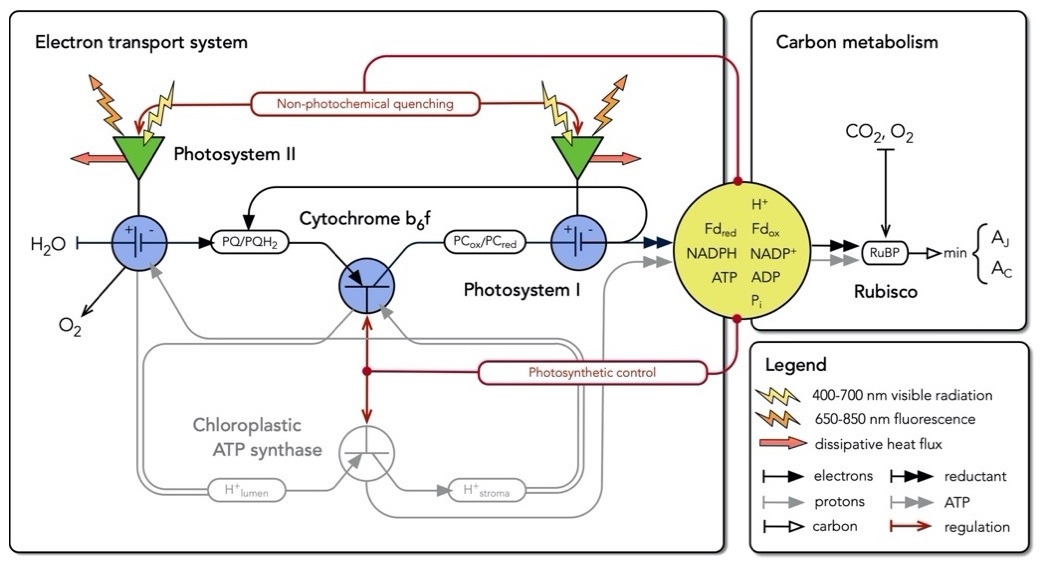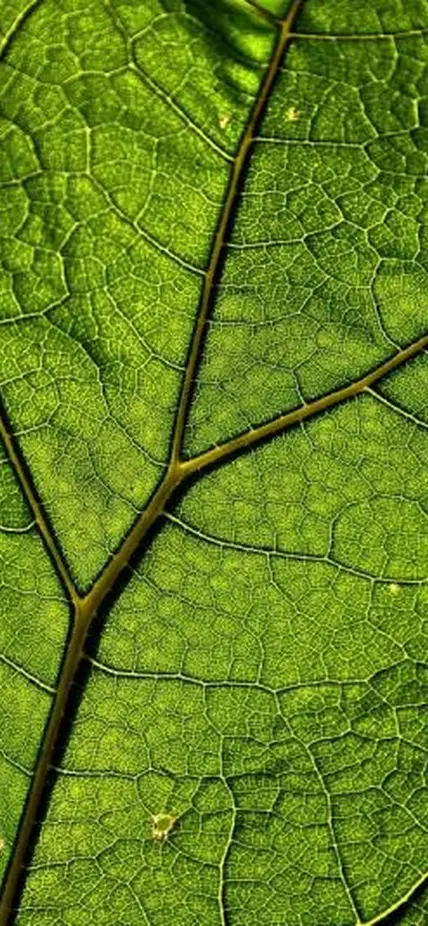Washington, DC—The fact that photosynthesis uses sunlight and atmospheric carbon dioxide to produce sugars has been known for more than a century. But how photosynthesis manages to maintain sugar production through variations in the availability of sunlight and carbon dioxide has remained a mystery until now.
New work published in Photosynthesis Research from Carnegie’s Jennifer Johnson and Joseph Berry reveals that an enigmatic enzyme called the cytochrome b6f complex coordinates the process of capturing sunlight and carbon dioxide.
Through photosynthesis, plants provide the foundation for life on Earth by capturing the Sun’s energy and converting it into chemical energy. Not only does this make our atmosphere oxygen rich, which enabled life as we know it to arise and thrive on Earth, it also forms the basis of the food chain.
“It’s hard to overstate the importance of photosynthesis. Understanding how this amazing process works is relevant for a wide range of socially and economically important applications, from engineering more productive crops to monitoring of the global carbon cycle,” explained Berry.
On a molecular level, photosynthesis has two components, the sunlight-powered splitting of water molecules, which produces chemical energy, and the fixation of atmospheric carbon dioxide into sugar molecules, which consumes that energy. While many of the details of the individual reactions are now well-understood, it has not been clear how the energy-producing and energy-consuming reactions are coordinated with one another.
Over the last 50 years, clues have accumulated suggesting that cytochrome b6f might be the key. But the challenges of observing cytochrome b6f in action made it difficult to test this hypothesis.
Johnson designed a set of experiments that enabled the researchers to see cytochrome b6f in action in intact, living leaves. This revealed that it plays a crucial role in regulating the flow of electrons between two key pieces of cellular machinery pigment-protein complexes that capture sunlight and convert it to chemical energy.
“We showed that in low light, cytochrome b6f allows electrons to flow between the two pigment-protein complexes as quickly as possible,” Johnson said. “But when light is high, cytochrome b6f acts as a surge protector, restricting the flow of electrons to a rate at which they can be safely used by the plant without inducing cellular damage.”
The discovery that cytochrome b6f controls the speed and efficiency of photosynthesis enabled Johnson and Berry to develop a new quantitative model of this process. The circuit-like model describes the relationship between the biochemical properties of leaves and their photosynthetic performance under different environmental conditions, including light, carbon dioxide, and temperature. It can replace the classic model that was developed in 1980 through a collaboration between Berry and the Australian National University’s Graham Farquhar and Susanne von Caemmerer.
“This work will change both the way that the photosynthesis community thinks about photosynthetic electron transport, and the way photosynthesis is modeled in the Earth system,” Berry concluded.

